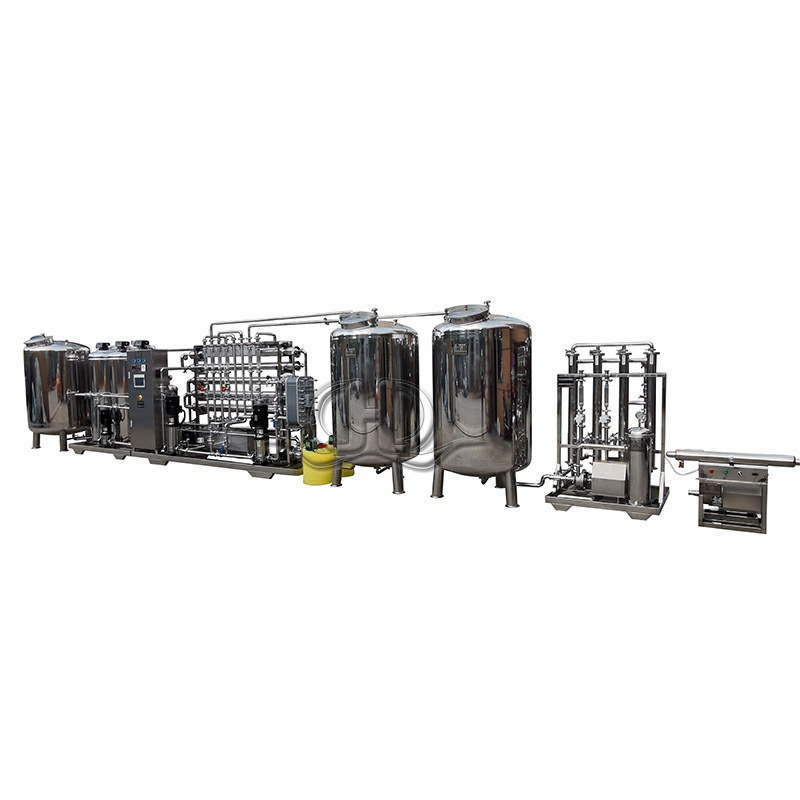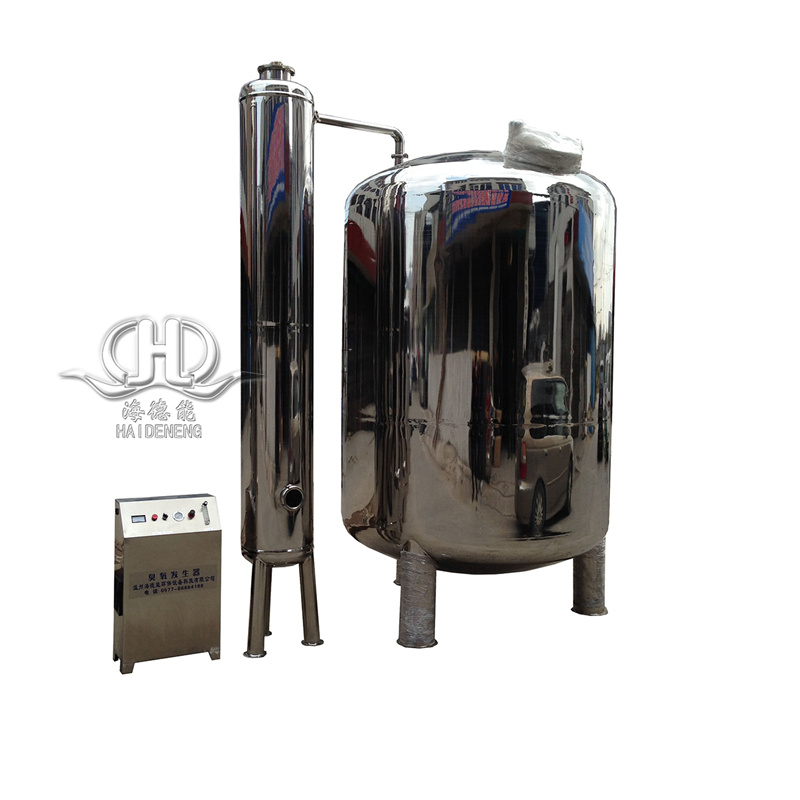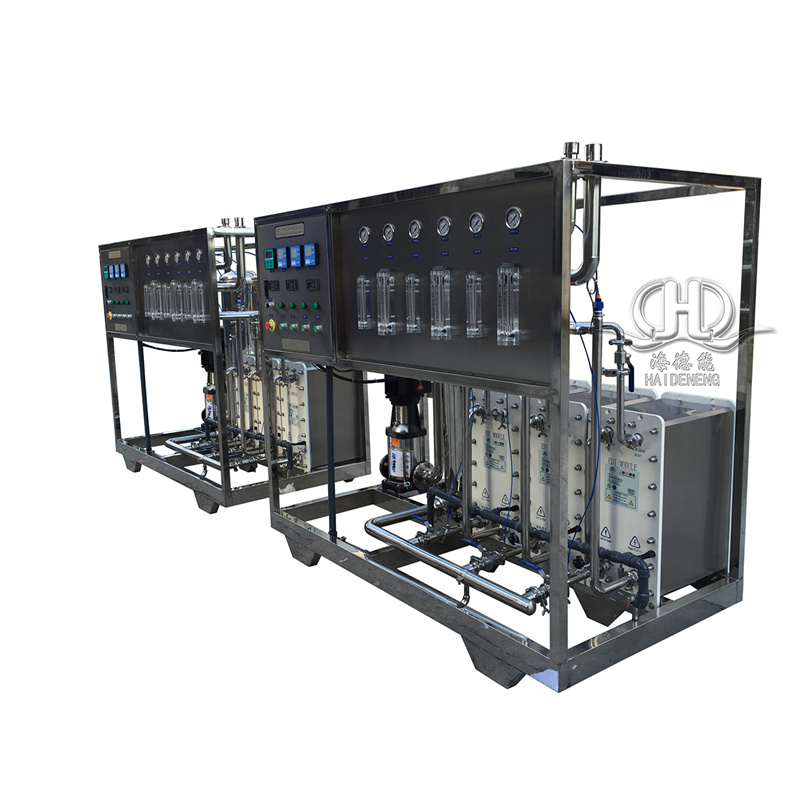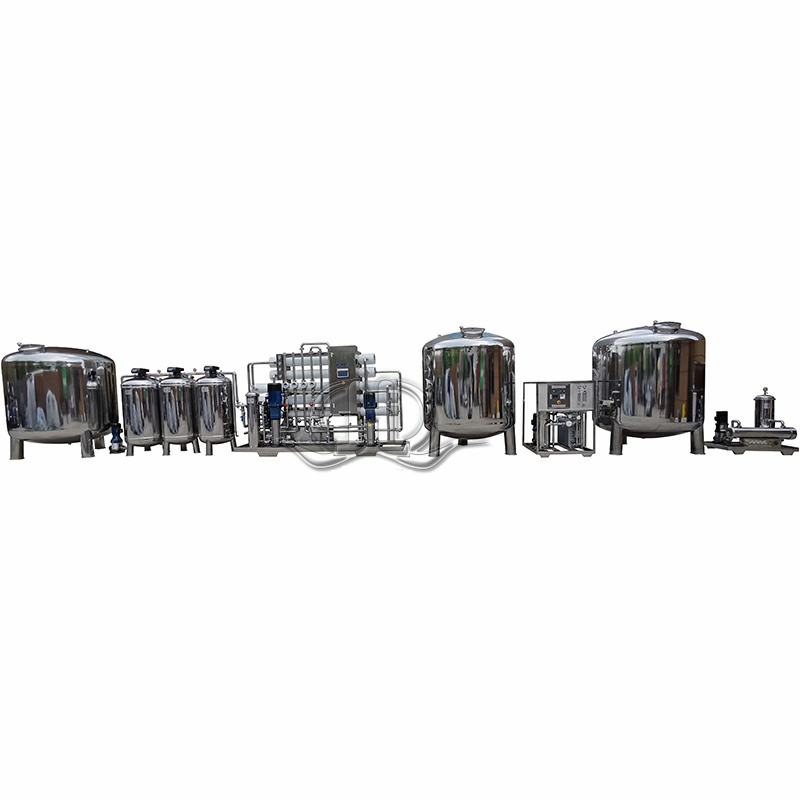Injection Water Production Sytem With Heat Exchanger
Product description
Injection water is the most widely used sterile preparation in the production of sterile preparations. The quality requirements for injection water have been strictly regulated in pharmacopoeias. In addition to the usual inspection items for distilled water, such as acidity, chloride, sulfate, calcium, ammonium, carbon dioxide, easily oxidizable substances, non-volatile substances, and heavy metals, it also needs to pass the pyrogen test. GMP clearly stipulates that the preparation, storage, and distribution of purified water and injection water should prevent the proliferation and contamination of microorganisms. The materials used for storage tanks and pipelines should be non-toxic and corrosion-resistant.
The quality requirements for injection water treatment equipment are as follows:
Injection water is used as a solvent for preparing injection solutions and sterile rinsing agents, or for washing vials (precision washing), final washing of rubber stoppers, pure steam generation, and medical clinical water-soluble powder solvents for sterile powder injections, infusions, water injections, etc. Because the prepared medications are directly injected into the body through muscle or intravenous administration, the quality requirements are particularly high and should meet the requirements of various injections in terms of sterility, absence of pyrogens, clarity, electrical conductivity should be> 1MΩ/cm, bacterial endotoxin <0.25EU/ml, and microbial index <50CFU/ml.
The other water quality standards should meet the chemical indicators of purified water and have extremely low total organic carbon concentration (ppb level). This can be monitored directly by using a specialized total organic carbon analyzer, which can be inserted into the injection water supply or return pipeline to simultaneously monitor electrical conductivity and temperature values. In addition to meeting the requirements of purified water, the injection water should also have a bacterial count of <50CFU/ml and pass the pyrogen test.
According to GMP regulations, the purified water and injection water systems must undergo GMP validation before they can be put into use. If the product needs to be exported, it must also comply with the corresponding requirements of the USP, FDA, cGMP, etc. For ease of reference and various treatment techniques to remove impurities in water, Table 1 lists the water quality requirements of the USP GMP and the effects of various treatment techniques for removing impurities in water as included in the Chinese GMP implementation guidelines. The preparation, storage, and distribution of injection water should prevent the proliferation and contamination of microorganisms. The materials used for storage tanks and pipelines should be non-toxic and corrosion-resistant. The design and installation of pipelines should avoid dead ends and blind pipes. Cleaning and sterilization cycles should be established for storage tanks and pipelines. The ventilation port of the injection water storage tank should be installed with a hydrophobic bactericidal filter that does not shed fibers. Injection water can be stored by using temperature insulation above 80℃, temperature circulation above 65℃, or storage below 4℃.
The pipes used for the pretreatment equipment for injection water generally use ABS engineering plastics or PVC, PPR, or other suitable materials. However, the distribution system of purified water and injection water should use corresponding pipeline materials for chemical disinfection, pasteurization, heat sterilization, etc., such as PVDF, ABS, PPR, and preferably stainless steel, especially the 316L type. Stainless steel is a general term, strictly speaking, it is divided into stainless steel and acid-resistant steel. Stainless steel is a type of steel that is resistant to corrosion by weak media such as air, steam, and water, but is not resistant to corrosion by chemically aggressive media such as acids, alkalis, and salts, and has stainless properties.
(I) Characteristics of injection water In addition, the influence of flow velocity on the growth of microorganisms in the pipe should be considered. When the Reynolds number Re reaches 10,000 and forms a stable flow, it can effectively create unfavorable conditions for the growth of microorganisms. On the contrary, if the details of the water system design and manufacturing are not paid attention to, resulting in too low flow velocity, rough pipe walls, or blind pipes in the pipeline, or using structurally unsuitable valves, etc., microorganisms may completely rely on the objective conditions caused by this to construct their own breeding ground – biofilm, which brings risks and troubles to the operation and daily management of purified water and injection water systems.
(II) Basic requirements for injection water systems
The injection water system is composed of water treatment equipment, storage equipment, distribution pumps, and pipelines. The water treatment system may be subject to external contamination from raw water and external factors. Raw water pollution is the main external source of pollution for water treatment systems. The US Pharmacopeia, European Pharmacopeia, and Chinese Pharmacopeia all clearly require that the raw water for pharmaceutical water should meet at least the quality standards for drinking water. If the drinking water standard is not met, pre-treatment measures should be taken. Since Escherichia coli is a sign of significant water contamination, there are clear requirements for Escherichia coli in drinking water internationally. Other contaminating bacteria are not subdivided and are represented in the standards as “total bacteria count”. China stipulates a limit of 100 bacteria/ml for the total bacteria count, indicating that there is microbial contamination in raw water that meets the drinking water standard, and the main contaminating bacteria that endanger water treatment systems are Gram-negative bacteria. Other factors such as unprotected vent ports on storage tanks or the use of inferior gas filters, or backflow of water from contaminated outlets, can also cause external contamination.
In addition, there is internal contamination during the preparation and operation of the water treatment system. Internal contamination is closely related to the design, selection of materials, operation, maintenance, storage, and use of water treatment systems. Various water treatment equipment may become internal sources of microbial contamination, such as microorganisms in raw water being adsorbed on the surfaces of activated carbon, ion exchange resins, ultrafiltration membranes, and other equipment, forming biofilms. Microorganisms living in biofilms are protected by biofilms and are generally not affected by disinfectants. Another source of contamination exists in the distribution system. Microorganisms can form colonies on the surfaces of pipes, valves, and other areas and multiply there, forming biofilms, thereby becoming persistent sources of contamination. Therefore, some foreign companies have stricter standards for the design of water treatment systems.
(III) Operating modes of injection water systems
Considering the regular cleaning and disinfection of the pipeline distribution system, there are usually two operating modes for purified water and injection water systems. One is batch operation, where the water is produced in batches, similar to products. The “batch” operation is mainly for safety considerations, as this method can separate a certain amount of water during the testing period until the testing is concluded. The other is continuous production, known as “continuous” operation, where water can be produced while being used.
IV) Daily management of injection water system The daily management of the water system, including operation and maintenance, is of great importance for validation and normal use. Therefore, a monitoring and preventive maintenance plan should be established to ensure that the water system is always in a controlled state. These contents include:
Operation and maintenance procedures for the water system;
Monitoring plan for key water quality parameters and operational parameters, including calibration of key instruments;
Regular disinfection/sterilization plan;
Preventive maintenance plan for water treatment equipment;
Management methods for critical water treatment equipment (including major components), pipeline distribution systems, and operational conditions.
Requirements for pre-treatment equipment:
Pre-treatment equipment for purified water should be equipped according to the water quality of the raw water, and the requirement is to first meet the drinking water standard.
Multi-media filters and water softeners should be able to perform automatic backwashing, regeneration, and discharge.
Activated carbon filters are places where organic matter accumulates. In order to prevent bacterial and bacterial endotoxin contamination, in addition to the requirement of automatic backwashing, steam disinfection can also be used.
Since the intensity of 255 nm wavelength of UV light induced by UV is inversely proportional to time, instruments with recording time and intensity meters are required. The immersed part should use 316L stainless steel, and the quartz lamp cover should be detachable.
Purified water after passing through the mixed-bed deionizer must be circulated to stabilize the water quality. However, the mixed-bed deionizer can only remove cations and anions from the water, and it is not effective for removing endotoxins.
Requirements for the production of injection water (clean steam) from water treatment equipment: Injection water can be obtained through distillation, reverse osmosis, ultrafiltration, etc. Various countries have specified clear methods for the production of injection water, such as:
The United States Pharmacopeia (24th edition) states that “injection water must be obtained by distillation or reverse osmosis purification of water that meets the requirements of the American Water and Environmental Protection Association, the European Union, or Japanese statutory requirements.”
The European Pharmacopeia (1997 edition) states that “injection water is obtained by appropriate distillation of water that meets statutory standards for drinking water or purified water.”
The Chinese Pharmacopeia (2000 edition) specifies that “this product (injection water) is water obtained by distillation of purified water.” It can be seen that purified water obtained by distillation is the internationally recognized preferred method for producing injection water, while clean steam can be obtained using the same distillation water machine or a separate clean steam generator.
Distillation has a good removal effect on non-volatile organic and inorganic substances, including suspended solids, colloids, bacteria, viruses, endotoxins, and other impurities in raw water. The structure, performance, metal materials, operation methods, and raw water quality of the distillation water machine will all affect the quality of injection water. The “multi-effect” of a multi-effect distillation water machine mainly refers to energy conservation, where thermal energy can be used multiple times. The key component for removing endotoxins in a distillation water machine is the steam-water separator.












